Traditional Maldivian cuisine, also known as Dhivehi cuisine, is an exotic assemblage of rich flavors with strong influences from its neighboring countries, such as India and Sri Lanka. The delicious food boasts a distinct tang made up of mild spiciness, delicate sweetness, and a touch of the ocean, ranging from easy-eating finger foods to complex and deliciously spicy curries.
In the past, Maldivians depended on essential ingredients such as fish, coconuts, breadfruit, millet and tubers, and over time, with the influence of foreigners from ancient trade and travel, Maldivian cuisine developed a distinctive blend with its own unique flavors, symbolizing a unique culinary identity.
Today, traditional Maldivian cuisine is based on three main ingredients and their derivatives, namely coconut, fish, and starches containing grains and vegetables, and is prepared using ancient cooking methods that have been passed down through the generations.
Here are the recipes to some of the most popular dishes in the Maldives to bring the delicious taste of the islands into your own home.
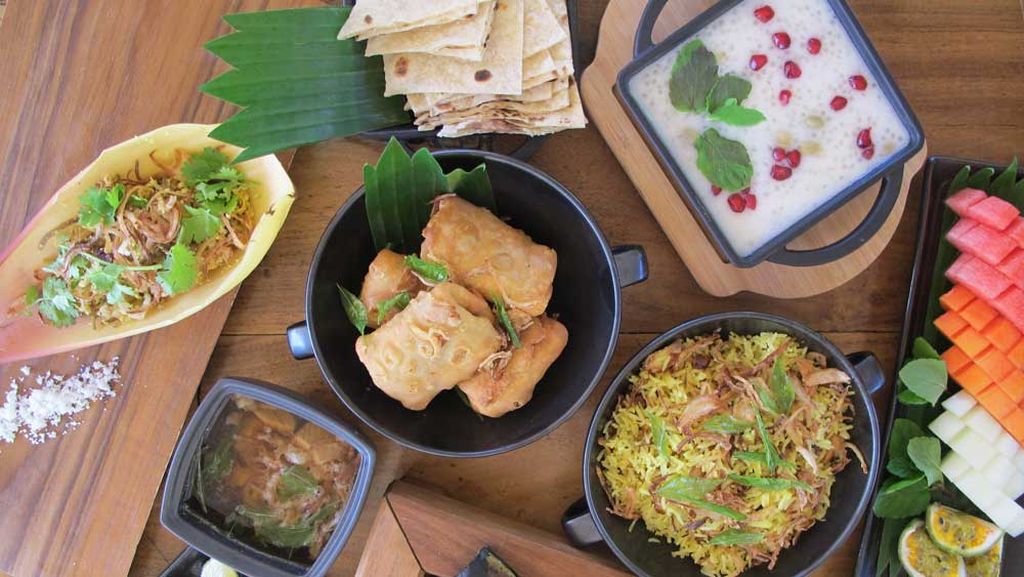 Photo credit: Kitchen Nine
Photo credit: Kitchen Nine
Bis Keemiyaa (Tuna and egg pastries)
Tuna is a staple part of the Maldivian diet, and these bis keemiyaa are great as appetizers or canapés. The little pastry envelopes are stuffed with a tuna and egg filling and are a simple finger food to pass around or pop into lunch boxes.
Ingredients:
For the filling:
1 tbsp vegetable oil
150g onion, finely sliced
A large sprig of curry leaves, washed and dried and finely chopped
300g white cabbage, finely sliced
225g smoked tuna fillet, diced
2 fresh red chilies, finely chopped
1 tbsp crushed black peppercorns
5 eggs, hard-boiled and chopped
Salt, to taste
For the pastry:
450g plain flour, sifted
1 tsp salt
80ml vegetable oil
A little warm water, to bind
1 egg yolk, beaten
Preparation:
For the filling, heat the oil in a large saucepan set over medium-high heat. Add the onions and curry leaves and sauté until the onion are translucent, then add the cabbage and stir-fry until the cabbage is soft. Add the tuna, chili, black pepper and eggs, mix well, and remove from the heat. Season to taste and set aside to cool.
Meanwhile, make the pastry. In a large bowl, mix the flour, salt, and oil, gradually adding just enough warm water to form a dough. Turn out onto a lightly-floured surface and knead until dry and smooth.
Preheat the oven to 220˚C (392˚F)/fan 200˚C (428˚F)/gas 7.
To make the pastries, divide the dough into ping-pong ball-sized pieces. Working one at a time, roll out into 4-inch discs. Place two teaspoons of the cooled filling in the center, and fold to enclose completely, sealing the edges firmly with fingers or a fork.
Brush the pastries with beaten yolk and place over greaseproof paper, in an oven tray.
Bake for ten minutes, then lower oven to 180˚C (356˚F)/fan 160˚C (320˚F)/gas 4 and bake for a further 15 min or until golden. Serve warm.
(Recipe courtesy of Good Things Magazine)
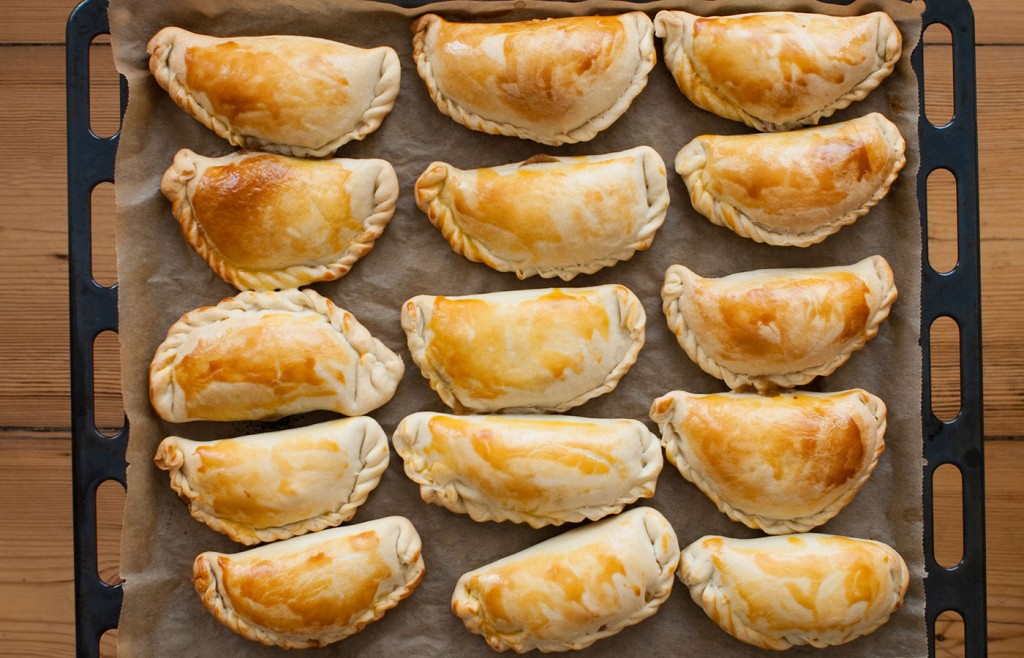 Bis Keemiyaa (tuna and egg pastries). Photo credit:Good Things Magazine
Bis Keemiyaa (tuna and egg pastries). Photo credit:Good Things Magazine
Mas Huni (Tuna, coconut, chili salad)
Mas Huni is a simple salad-like dish of tuna, coconut, and chili, which is loved by all Maldivians. The meal is traditionally eaten for breakfast with an unleavened flatbread called roti or chapati and black tea.
Ingredients:
1 medium-size onion, thinly sliced
1 chili pepper (Dorset Naga/ Chinese capsicum/ ghost chili) – finely chopped
1 cup diced smoked tuna (alternatively use one can of tuna chunks)
1 cup grated coconut
The juice of one medium-sized lime
Salt, to taste
Preparation:
Squash the onion and chili pepper with the lime juice and salt.
Add the tuna and mix well.
Mix in the coconut.
Taste the coconut-tuna mixture; add more salt or lime juice to suit your taste.
Serve with unleavened flatbread called roti or chapati.
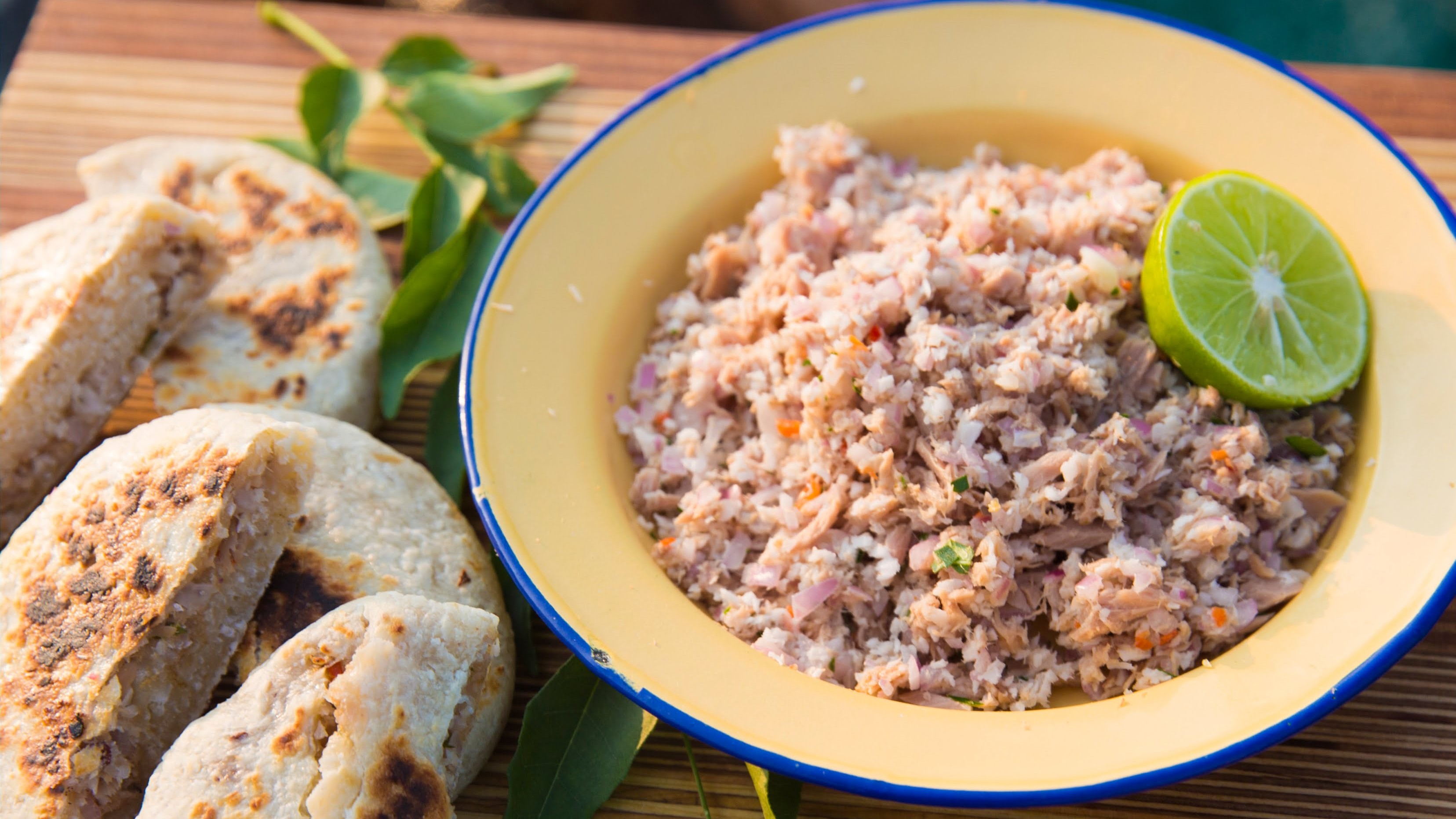 Mas Huni (tuna, coconut, chili salad). Photo credit: YouTube
Mas Huni (tuna, coconut, chili salad). Photo credit: YouTube
Kulhimas (Chili tuna)
Fish is the star ingredient in the ocean-bound island nation’s cuisine, with tuna being the king. ‘Kulhi’ in the Dhivehi language, means ‘hot or spicy’ and ‘mas’ means fish, and this spicy fish dish of chili tuna is loved by all Maldivians. Simply delicious and easy to prepare, this dish can be eaten for breakfast with roti or chapati, or for dinner with roti or rice.
Ingredients:
500 g fresh tuna cut into small cubes (1 cm x 1 cm)
2 medium-sized onions, thinly sliced
1 tsp grated ginger
4 cloves garlic crushed or finely chopped
1 chili pepper (Dorset Naga/ Chinese capsicum/ ghost chili) chopped
3 pods of cardamom (cut at both ends)
2 tsp chili powder
2 tbsp fish or chicken curry powder/paste
¾ cup thick coconut milk
½ cup water
2 curry leaves (de-stemmed)
4 pieces of fragrant Pandan leaves cut into 1-inch pieces
3 tbsp cooking oil
Salt, to taste
Preparation:
Heat the oil and fry the onions, garlic, ginger, curry leaves and pandan leaves until the onion becomes transparent.
Add the chili powder, curry powder/paste, and salt while stirring.
Add the tuna and toss until all tuna pieces are well coated.
Add chili pepper, cardamom pods, coconut milk and water and cook on low heat, occasionally stirring, until the tuna is cooked.
Serve with roti or rice.
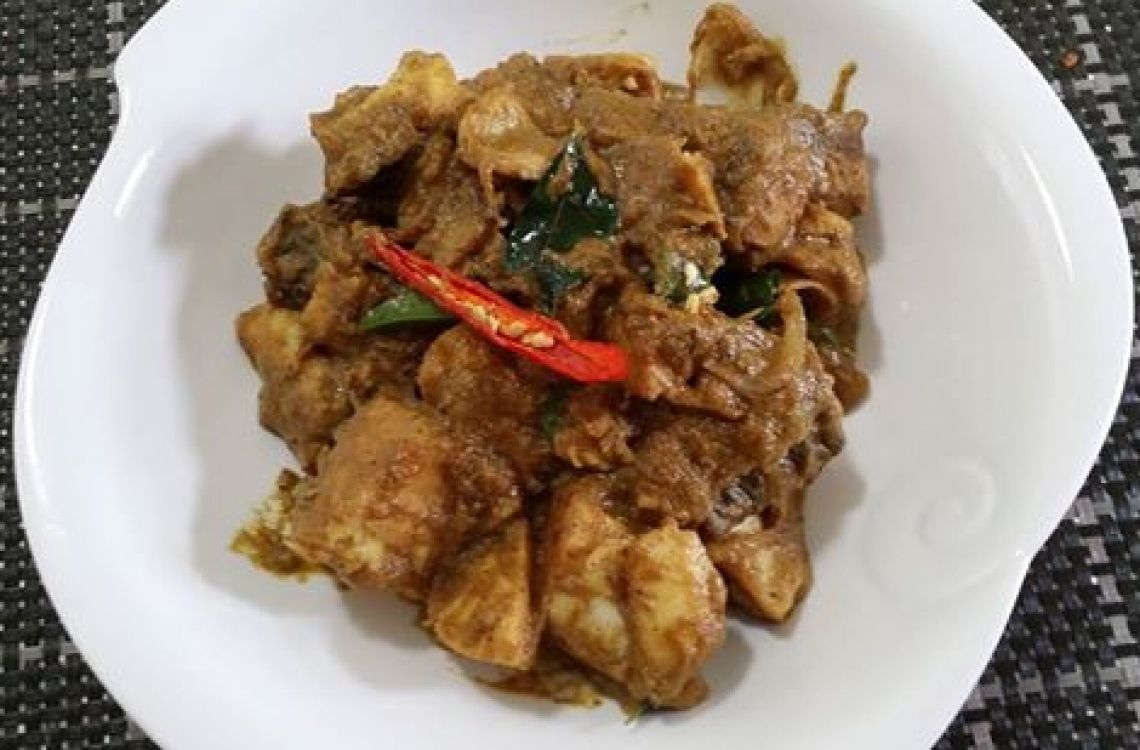 Kulhimas (chili tuna). Photo credit: Pinterest
Kulhimas (chili tuna). Photo credit: Pinterest
Kulhi Boakibaa (Fish cakes)
Kulhi Boakibaa or fish cakes have been made for thousands of years and are served on special occasions like festivals and feasts. Nowadays, the fish cake is also eaten as a snack during evening tea.
Ingredients:
1½ cups rice, soaked overnight and coarsely ground into a thick paste
3 cups smoked tuna, sliced (alternatively use three cans of tuna chunks)
1 cup grated coconut
2 finely chopped chili peppers (Dorset Naga/ Chinese Capsicum/ ghost chili)
2 curry leaves (de-stemmed), finely chopped
1 large onion, finely chopped
5 cloves of garlic, grated or finely chopped
1 tbsp grated ginger
The juice of two limes
½ tsp turmeric powder
1 tbsp coconut oil or any other vegetable oil
Salt, to taste
Preparation:
Chop the garlic, ginger, onions, curry leaves, chili, lime juice, turmeric powder, and salt.
Add the tuna, followed by the coconut and mix well.
Add the rice and mix until it is a thick, sticky paste. Taste and add more salt or lime, if needed.
Spread coconut oil on a baking pan.
Place the prepared paste in the pan and spread it evenly.
Bake at 180˚C or until a toothpick inserted into the cake comes out clean.
Traditionally, Maldivians use a large cooking pot with a flat lid. An open fire is made using coconut shells. After the coconut shells have burnt down and are smoldering, the pot is placed on the smoldering coconut shells, some of which are also placed on top of the lid of the pot so that the pot is ‘submerged’ in the fire. This way, the fish cake is baked simultaneously on its top and bottom.
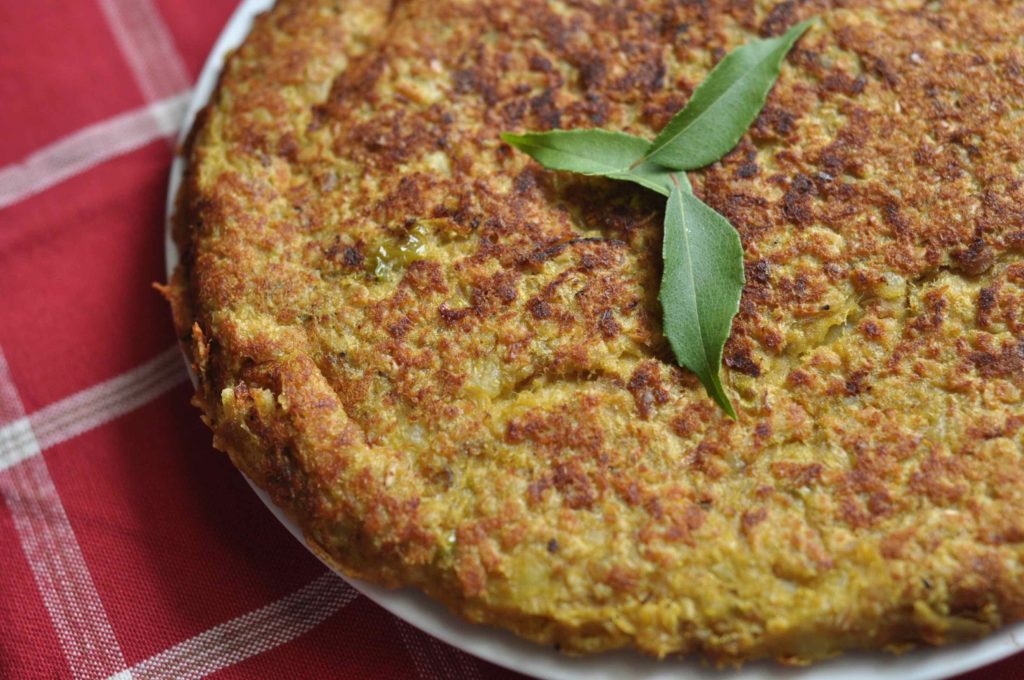 Kulhi Boakibaa (Fish cakes). Photo credit: Pinterest
Kulhi Boakibaa (Fish cakes). Photo credit: Pinterest
Garudhiya (Maldivian fish soup)
Garudhiya (Maldivian fish soup) is a highly valued dish made with raw tuna and served almost every day for lunch or dinner.
Ingredients:
250 g fresh tuna
1 small onion, diced
1 tbsp whole peppercorns
1 curry leaf (de-stemmed)
1 liter of water
Salt, to taste
Preparation:
Cut the raw tuna into small cubed pieces.
Place some water into the pot, along with all the ingredients, and cook until the water begins to boil.
Reduce the heat and remove scum from the top of the water.
When the fish is cooked, turn off the heat, and serve hot with rice, lime, and chili.
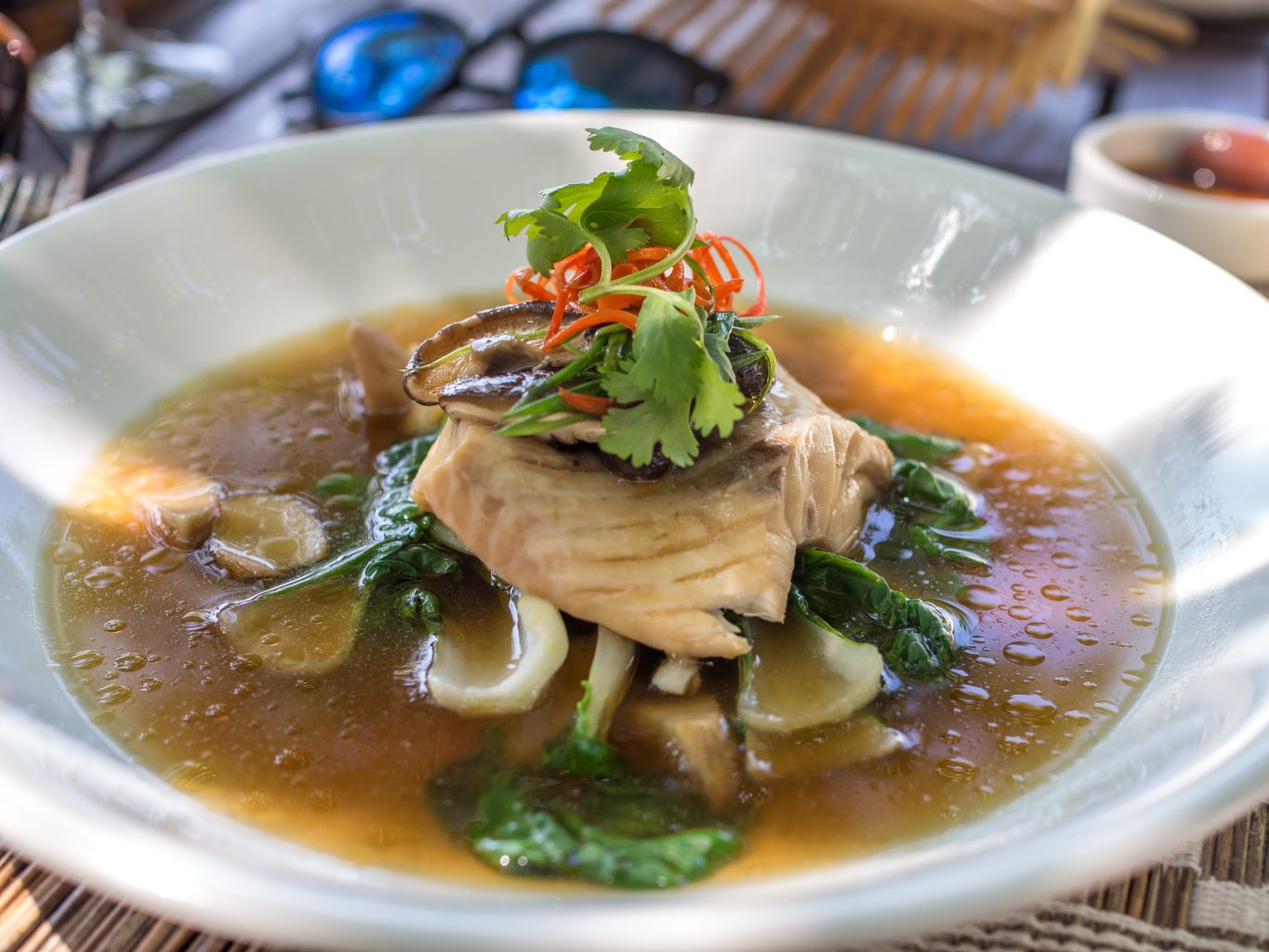 Garudhiya (Maldivian fish soup). Photo credit: Bel Around the World
Garudhiya (Maldivian fish soup). Photo credit: Bel Around the World
Dhon Riha (Maldivian tuna curry)
Ingredients:
200g coconut meat, fresh or frozen
400ml thick coconut milk
200ml thin coconut milk
½ tbsp ground cinnamon
¼ tbsp ground turmeric
1-inch piece of ginger root, crushed
1 onion, finely sliced
500g tuna fillet, cubed
7 tsp good-quality curry powder
½ a red chili (or to taste), finely sliced
½ a raw (green) mango, peeled and chopped
Salt, to taste
Preparation:
Blend the turmeric, salt, and coconut meat in a small bowl and set aside.
Combine half of the thick coconut milk with all of the thin coconut milk in a large, deep saucepan. Mix the cinnamon, ginger, and onion, add half to the coconut milk and set the remainder aside.
Set the saucepan over low heat and slowly bring to the boil. Meanwhile, combine the turmeric-coconut paste with the remaining cinnamon mixture in a shallow dish and add the tuna, coating the pieces thoroughly in the spice paste.
When the coconut milk begins to boil, add the tuna, curry powder, chili and raw mango. Stir continuously as the mixture cooks over low heat. When it starts to boil again, add the remaining thick coconut milk and cook for another three minutes. Serve hot, with rice or roti.
Serves 4 people
(Recipe courtesy of Good Things Magazine)
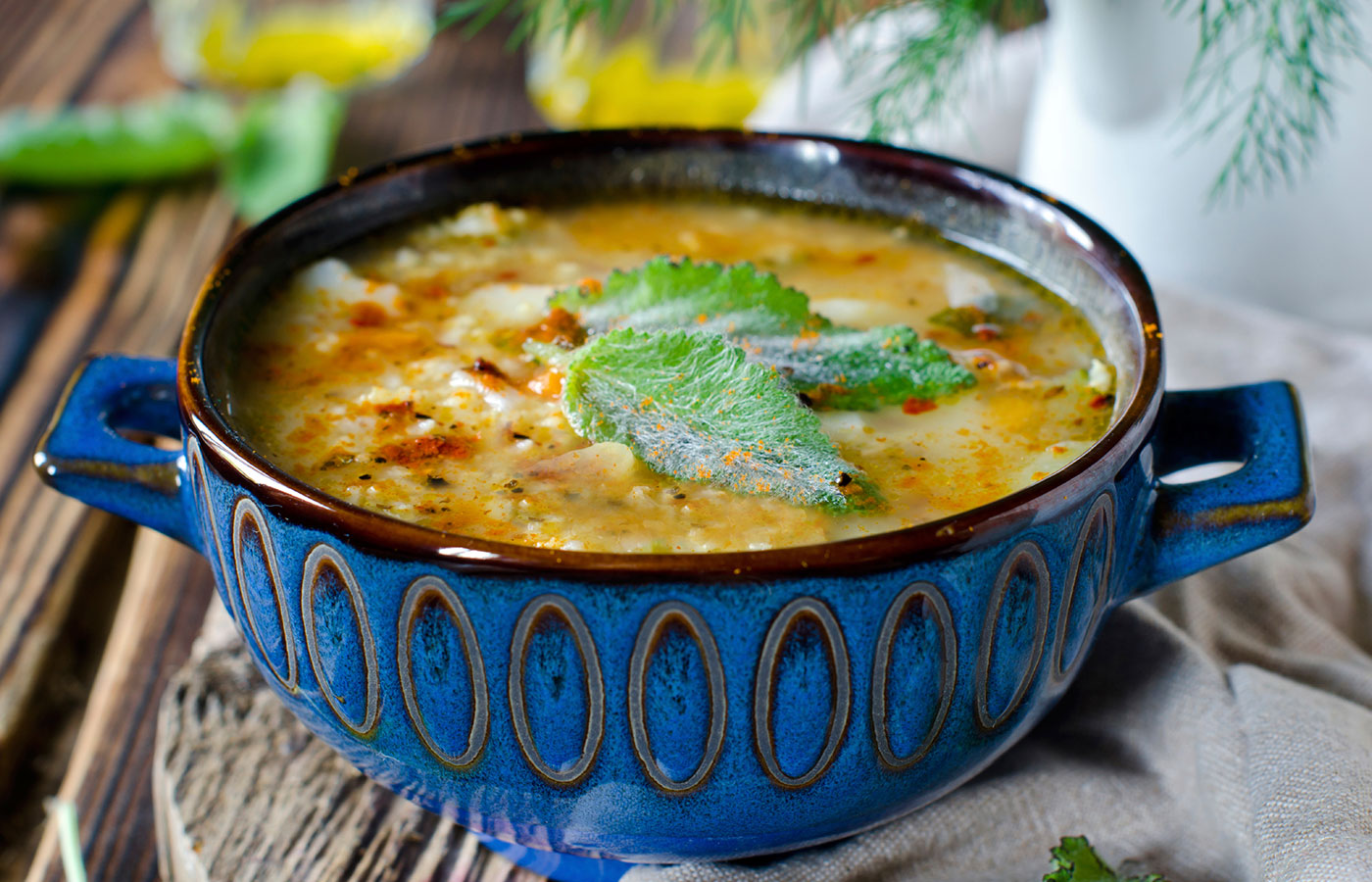 Dhon Riha (Maldivian tuna curry). Photo credit: Pinterest
Dhon Riha (Maldivian tuna curry). Photo credit: Pinterest
Fihunu mas (Maldivian grilled fish)
Ingredients:
For the fish:
4 x whole fish (try seabass), gutted and descaled
2 fresh red chilies (or to taste)
1/2 onion, chopped
2 cloves of garlic, finely sliced
1 tsp ground cumin
2 curry leaves, washed and dried
1 tsp black peppercorns
Salt, to taste
For the salsa:
1 ripe mango, diced
1 red chili, finely chopped
A handful of fresh coriander, finely chopped
½ a lime, juice only
Salt, to taste
Preparation:
Preheat the grill to high.
In a blender, process the chili, cumin, curry leaves, onion, garlic, peppercorns, and salt to a smooth paste, and set aside.
Make deep slashes along the sides of the descaled fish, and pack with the spice paste. Place the fish on a foil-lined tray and grill on both sides until cooked through.
Meanwhile, make the salsa by combining all ingredients in a small bowl. Refrigerate until required.
Serve the grilled fish with rice, roti, and the mango salsa.
Serves 4 people
(Recipe courtesy of Good Things Magazine)
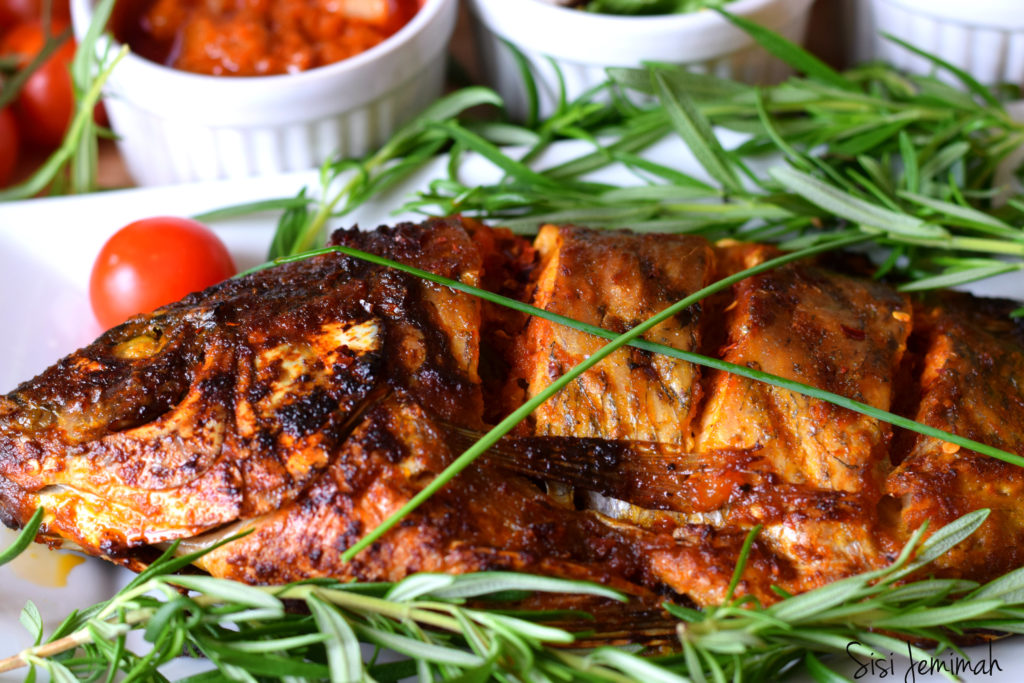 Fihunu mas (Maldivian grilled fish). Photo credit: Sisi Jemimah
Fihunu mas (Maldivian grilled fish). Photo credit: Sisi Jemimah
Handulu Bondibai (Sweetened sticky rice)
Handulu Bondibai (sweetened sticky rice) is a special dessert made by Maldivians for special occasions like the birth of a child. The dish is traditionally prepared with rice, but can also be made using breadfruit or sago, and is eaten with ‘kulhimas’ (chili tuna). On special occasions, parcels of ‘handulu bondibai’ and ‘kulhimas’ are distributed to all households in the islands.
Ingredients:
2 cups rice
2½ cups sugar
5 pods of cardamom
5 pieces of fragrant Pandan leaves cut into 1-inch pieces
1 tbsp rose water
5 cups water
1 cup of thick coconut milk
Preparation:
Rinse the rice with cold water until the water running off the rice is clear.
Place the rice, water, and coconut milk in a pan. Add the cardamom and Pandan leaves, and cook over medium heat.
When the rice is cooked, and all the water has evaporated, the rice should be almost soft (if the rice is too soft then it is not suitable for this dish).
Add the sugar and cook for 3 to 4 minutes, mixing occasionally. The rice should become thick and sticky.
Turn off the heat, and add rose water, and mix well.
 Handulu Bondibai (sweetened sticky rice). Photo credit: Pinterest
Handulu Bondibai (sweetened sticky rice). Photo credit: Pinterest
Dhonkeyo Kahuku (Banana fritters)
These sweet treats are ideal for dessert or a sugary snack.
Ingredients:
5 very ripe bananas, mashed
115g castor sugar
275g plain flour
100g coconut meat, fresh or frozen
A few drops rosewater, to taste (optional)
Coconut oil (or use vegetable oil), for deep-frying
Preparation:
Combine the mashed bananas, flour, coconut, and rosewater (if using) in a large bowl until well mixed.
Heat the oil for deep-frying to 180˚C (356˚F).
Create small balls from the banana mixture and carefully add to the hot oil in batches.
Deep-fry the fritters until golden-brown, then remove with a slotted spoon, drain on kitchen paper, and serve.
(Recipe courtesy of Good Things Magazine)
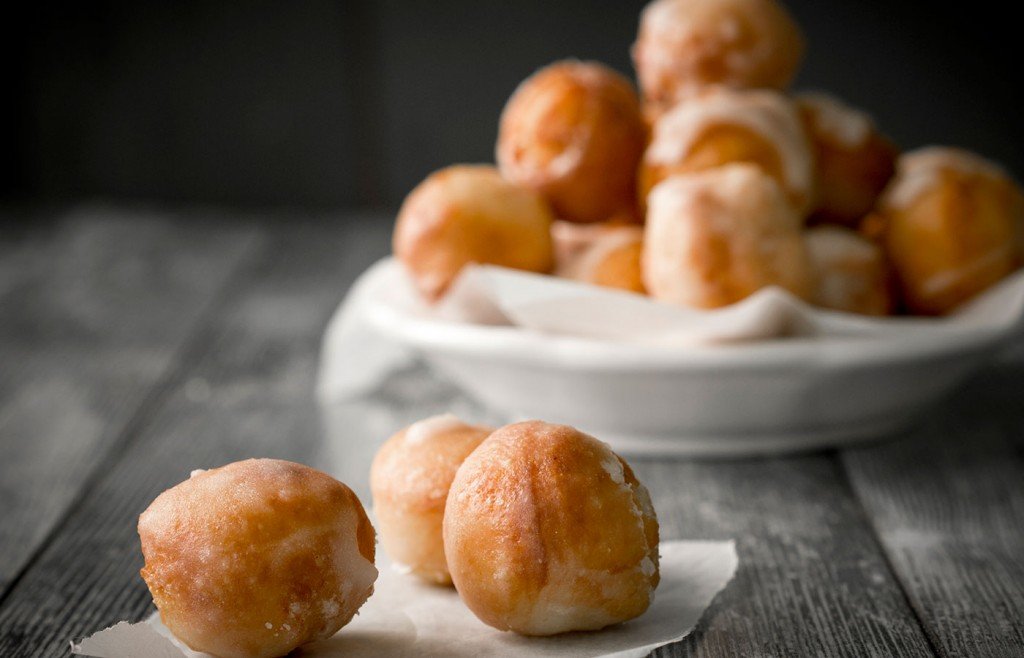 Dhonkeyo Kahuku (banana fritters). Photo credit: Good Things Magazine
Dhonkeyo Kahuku (banana fritters). Photo credit: Good Things Magazine
Article by Mia Russell©




[…] cultural immersion, searching for pods of spinner dolphins, and learning how to cook traditional Maldivian cuisine. Sports and recreational activities include snorkeling and scuba diving, free-diving, […]
Please post the recipe of Maldivian Kabab (Which is available in kabab kada)